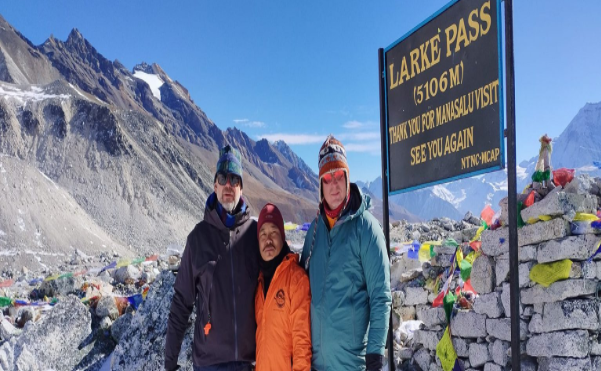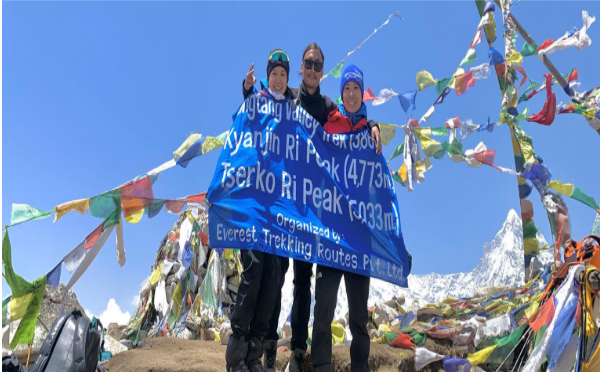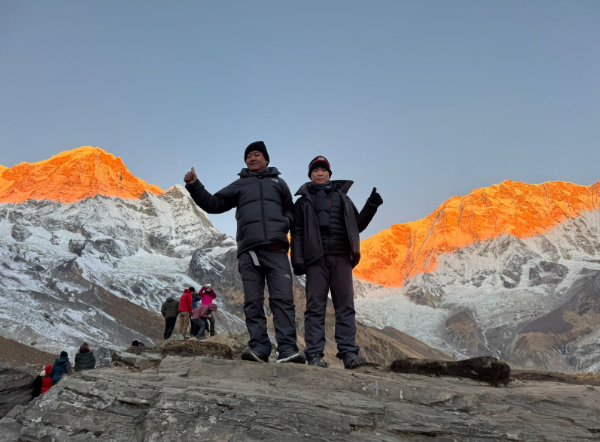Nepal’s Himalayan region offers some of the world’s most spectacular trekking routes, each with its unique charm and challenges. In this comprehensive guide, we’ll explore four iconic treks that showcase the best of Nepal’s natural beauty, cultural heritage, and mountaineering legacy.
Annapurna Base Camp Trek
The (ABC) trek stands as one of Nepal’s most beloved trekking routes, offering an perfect blend of natural grandeur and cultural immersion. This trek leads adventurers into the heart of the Annapurna Sanctuary, a natural amphitheater surrounded by towering peaks.
Distinctive Features:
- Elevation: Base camp sits at 4,130 meters (13,550 feet)
- Duration: Typically 7-12 days
- Best Season: October-November and March-May
- Difficulty: Moderate to challenging
The journey begins in the charming city of Pokhara, winding through traditional Gurung villages where trekkers experience authentic Nepali hospitality. As you ascend, the landscape transforms dramatically from lush rhododendron forests to alpine terrain. The trek’s crown jewel is the base camp itself, offering panoramic views of the Annapurna range, including Annapurna I (8,091m) and the distinctive fish-tail peak of Machapuchare (6,993m).
Modern teahouses along the route provide comfortable accommodation and hot meals, making this trek accessible to reasonably fit hikers. The well-maintained trails and established infrastructure have made ABC one of Nepal’s most popular treks, perfect for both novice and experienced trekkers.
Manaslu Circuit Trek
The Manaslu Circuit Trek offers a more remote and challenging alternative to the popular Annapurna Circuit. Circling the world’s eighth-highest peak, Mount Manaslu (8,163m), this trek provides an authentic wilderness experience with fewer crowds.

Distinctive Features:
- Elevation: Highest point at Larkya La Pass (5,160m)
- Duration: 14-16 days
- Best Season: March-May and October-November
- Difficulty: Challenging
This restricted area requires special permits, helping preserve its pristine nature and cultural authenticity. The trek traverses through diverse ecosystems, from subtropical forests to high-altitude desert landscapes. Trekkers pass through remote villages influenced by both Hindu and Tibetan Buddhist cultures, offering unique insights into Nepal’s cultural diversity.
The circuit’s highlight is crossing the challenging Larkya La Pass, rewarding trekkers with spectacular views of Manaslu, Himlung Himal, and the Annapurna range. The trek’s remote nature means facilities are more basic than on popular routes, adding to its adventure appeal.
Langtang Valley Trek
Often called the “Valley of Glaciers,” the Langtang Valley Trek offers an accessible yet profound trekking experience near Kathmandu. This route showcases the raw beauty of the Langtang National Park and the resilience of its communities following the 2015 earthquake.

Distinctive Features:
- Elevation: Reaches 4,984m at Tserko Ri
- Duration: 7-10 days
- Best Season: March-May and September-November
- Difficulty: Moderate
The trek begins with a drive from Kathmandu to Syabrubesi, then follows the Langtang River through forests and yak pastures. The valley’s unique geography creates a diverse ecosystem, home to rare species like the red panda and Himalayan tahr.
What sets Langtang apart is its strong Tamang culture and the opportunity to witness traditional cheese-making at one of the highest dairy farms in the world. The rebuilt villages stand as a testament to community resilience, while the surrounding peaks offer some of Nepal’s most dramatic mountain views.
Mardi Himal Trek
The Mardi Himal Trek represents one of Nepal’s hidden gems, offering a less-traveled alternative to the ABC trek. This relatively new route provides stunning views of the Annapurna range from a different perspective.
Distinctive Features:
- Elevation: Base camp at 4,500m
- Duration: 5-8 days
- Best Season: March-May and September-November
- Difficulty: Moderate
Starting near Pokhara, the trek ascends through mystical rhododendron forests before emerging onto ridge lines offering panoramic mountain views. The route’s relatively short duration and moderate difficulty make it perfect for trekkers with limited time or those seeking a less crowded experience.
The trek’s highlight is the close-up view of Machapuchare (Fishtail Mountain) and the Annapurna range from high camp. The trail passes through traditional villages and camps, providing authentic experiences without the crowds of more popular routes.
Key Takeaways
- Accessibility and Duration Each trek offers different levels of accessibility and time commitments. The Mardi Himal Trek suits those with limited time, while the Manaslu Circuit demands a more substantial time investment. Langtang’s proximity to Kathmandu makes it logistically convenient, and ABC provides well-developed infrastructure.
- Seasonal Considerations All four treks share optimal seasons (October-November and March-May), but each offers unique experiences throughout the year. Spring brings rhododendron blooms, while autumn offers clearer skies and stable weather.
- Cultural Immersion Each route provides distinct cultural experiences:
- Manaslu: Remote Buddhist communities and monasteries
- Langtang: Tamang culture and traditions
- Annapurna: Gurung villages and customs
- Mardi Himal: Authentic village life away from major tourist routes
- Infrastructure and Accommodation The treks vary significantly in terms of facilities:
- ABC: Well-developed teahouse infrastructure
- Manaslu: Basic but improving facilities
- Langtang: Rebuilt infrastructure post-2015
- Mardi Himal: Mix of teahouses and basic lodges
- Physical Demands Understanding the physical requirements is crucial:
- Manaslu Circuit: Most challenging, requiring good fitness
- ABC and Langtang: Moderate difficulty with good acclimatization options
- Mardi Himal: Moderately challenging but shorter duration
- Permit Requirements
- Manaslu requires special restricted area permits
- All treks need TIMS cards and national park permits
- Costs vary significantly between routes
- Environmental Responsibility All routes require responsible trekking practices to preserve their natural beauty and cultural heritage. Trekkers should follow established guidelines for waste management and cultural respect.
These four treks represent different facets of Nepal’s trekking possibilities, from well-established routes to hidden gems, from cultural immersion to high-altitude adventures. Each offers unique perspectives on the Himalayas and Nepal’s rich cultural tapestry, catering to various preferences and capabilities.
Contact Us;
Everest Trekking Routes Pvt. Ltd.
Khumbu, Nayabazaar, Kathmandu, Nepal
Mobile : +977-9843467921 (Rabin)
Email: [email protected]
URL:- www.everesttrekkingroutes.com

